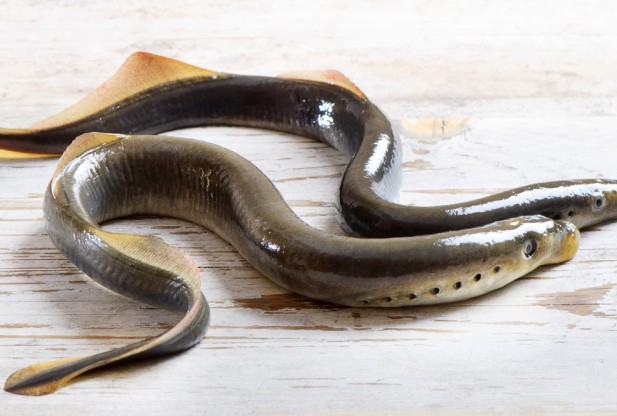ANN ARBOR—The Great Lakes Fishery Commission (GLFC) has reported that populations of the invasive sea lamprey remain at near-historic lows in Lakes Michigan, Huron and Ontario, though the destructive parasitic pest has increased in abundance in Lakes Superior and Erie. Sea lamprey population increases in Lakes Superior and Erie were greater compared to the other lakes even as abundances are generally holding steady.
A GLFC release notes the commission and its partners believe sea lamprey populations across the basin may be rebounding from the harsh winters of 2013/2014 and 2014/2015, though other factors such as prey availability and warmer water temperatures may be factors as well. In response to the increased numbers, the GLFC and its partners have ratcheted up control in problem areas and heightened monitoring and assessment so that future control efforts will be targeted effectively.
Sea lampreys remain a constant battle in the Great Lakes as the invader, native to the Atlantic Ocean, reproduces in freshwater lakes destroying many species of fish. Today, the Great Lakes fishery is worth $7 billion annually to the people of Canada and the United States. Without sea lamprey control, the fishery would suffer significant ecological and economic harm.
Before control, sea lampreys killed an estimated 103 million pounds (47 million kilograms) of fish per year. Today, because of control, sea lampreys kill less than 10 million pounds (4.5 million kilograms) of fish per year, the GLFC release notes.
“The sea lamprey is one of the worst human-caused ecological disasters ever inflicted upon the Great Lakes,” the release continues. “Sea lampreys invaded through shipping canals and by 1939 were present throughout the system. They attach to Great Lakes fish with a tooth-filled, suction cup mouth and file a hole through the fish’s scales and skin with a razor-sharp tongue. The average sea lamprey will kill up to 40 pounds (18 kgs) of fish during its parasitic stage. Sea lampreys prefer trout, salmon, whitefish and sturgeon, but they also attack smaller fish like walleye and perch.
Given the tremendous damage sea lampreys cause, Canada and the United States, through the 1954 Convention on Great Lakes Fisheries, charged the GLFC with implementing sea lamprey control and research. The commission partners with Fisheries and Oceans Canada, the US Fish and Wildlife Service and the US Geological Survey to deliver the program. Sea lamprey control consists of several techniques including lampricides, barriers and traps. The commission also is experimenting with chemosensory cues as a way to disrupt spawning behavior.
“Sea lampreys are the scourge of the Great Lakes and must be controlled,” said David Ullrich, chair of the GLFC. “Without sea lamprey control the Great Lakes fishery would be laid to waste by the voracious predator. Unfortunately, sea lampreys are here to stay. Fortunately, we can control them effectively such that we lose only small amount of fish to lamprey compared to the hundred million pounds lost each year prior to our control program. Sea lamprey control is worth the effort and is the foundation of the fishery we enjoy today.”
In Lake Huron, heightened and targeted treatment strategies in Lake Huron employed since 2010, including two large-scale treatments of the St. Marys River, have contributed to historic lows in lamprey abundances; another round of targeted treatment is scheduled for 2018. Lake Huron likely benefits from the treatment of tributaries in the northern portion of Lake Michigan (e.g. Manistique River), the release notes. Sources to watch include the St. Marys River and tributaries that are difficult to treat in the northern portions of the lake.




